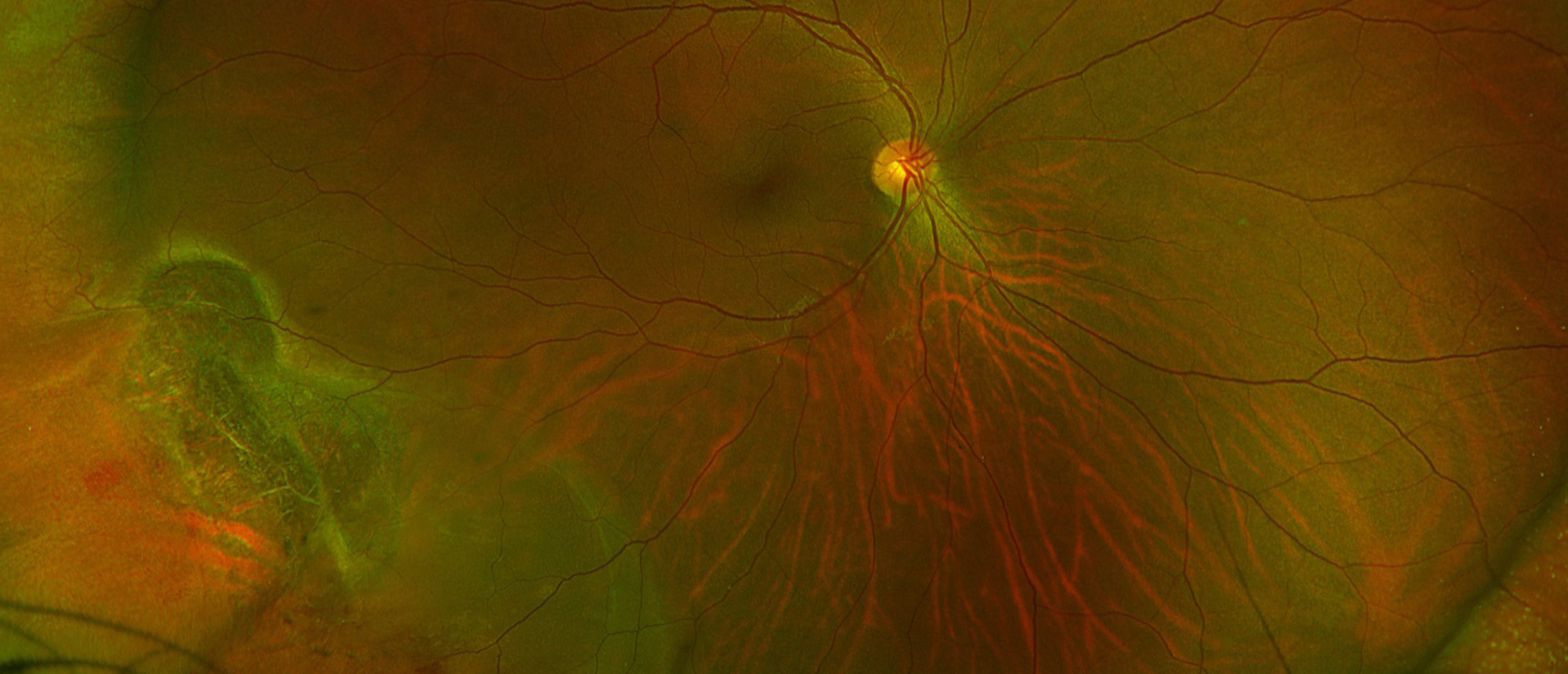Retinal Tear
An asymptomatic patient presented for routine ophthalmic examination. The anterior segment examination was significant for cataracts in both eyes. The dilated fundus examination revealed a superotemporal horseshoe tear (HST) with surrounding subretinal fluid in the right eye and was normal in the left eye. The HST was observed in the right eye. At last scheduled follow-up, two months after presentation, the patient remained asymptomatic, and the examination was stable. Prophylaxis of rhegmatogenous retinal detachment (RRD) is a worthwhile goal and gained importance after Jules Gonin’s assertion that full thickness retinal breaks were required for RRD formation. Natural history studies of retinal breaks demonstrated that acute, symptomatic HST were responsible for 30-50% of RRDs. The American Academy of Ophthalmology Preferred Practice Pattern recommends prophylactic treatment of these breaks. In comparison, there is a lack of studies examining the prophylactic treatment of asymptomatic retinal breaks. The progression of asymptomatic HST to RRD is thought to be low, approximately 5% by early studies performed by Byer and Neumann. Despite the lack of evidence, some retina specialists recommend treatment, particularly in eyes in which the fellow eye suffered an RRD, called fellow eyes. Prophylactic treatment of RRD precursors, such as lattice degeneration, also attracts attention. This lesion, too, is of interest in fellow eyes. Lattice degeneration is present in 30% of RRDs. A study of lattice degeneration in fellow eyes by Folk et al. demonstrated a lower incidence of RRD in patients who underwent prophylactic treatment for lattice degeneration. This modest benefit, however, did not remain in cases of myopia > 6 diopters or in patients with lattice degeneration over more than 6 clock hours. In cases of lattice degeneration with atrophic holes without demonstration of progression, the AAO Preferred Practice Pattern suggests observation with regular follow-up is acceptable. The prevention of RRD by treating precursor lesions, particularly retinal breaks, is of great interest to retinal physicians and other eye care providers. Existing evidence is strongly in favor of treating acute symptomatic HST and flap tears. There is insufficient evidence of benefit to recommend widespread treatment of asymptomatic retinal breaks and stable atrophic holes within lattice.
Presentation Date: 08/31/2023
Issue Date: 09/15/2023
Please log in or click on ENROLL ME to access this course.
